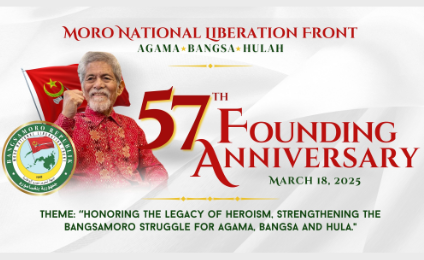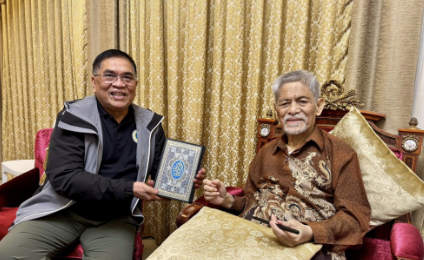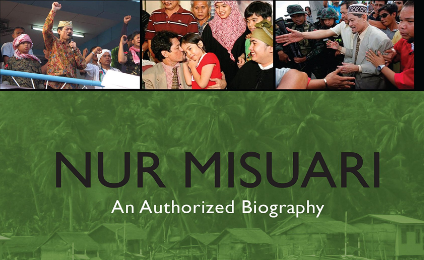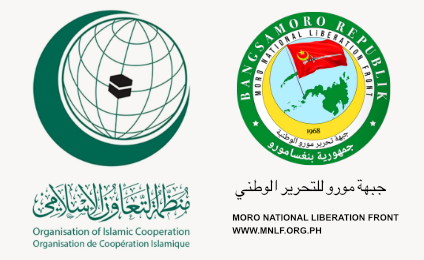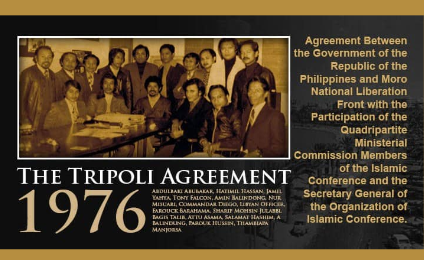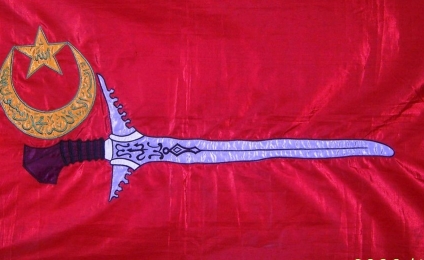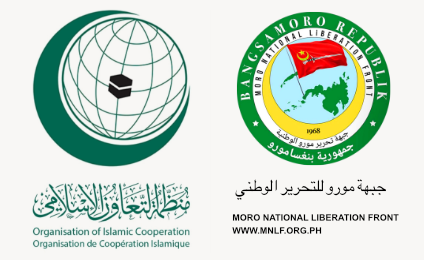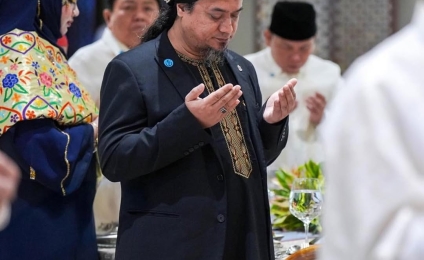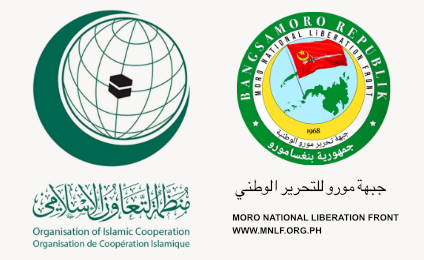SOUTHERN Philippines, particularly the Autonomous Region in Muslim Mindanao (ARMM), is intricately connected to the wider and bigger community of nations known as the Organization of the Islamic Conference or the OIC. The basis of this connection is the fact that the Muslims in Southern Philippines, also known as the Bangsamoro, belong to that one universal Islamic Ummah (community).
While the OIC was organized in the aftermath of the 1967 Middle East War to support the Palestinian rights, it has, through the years, taken broader and larger issues affecting the Islamic Ummah, especially in places where Muslims are in the minority. It is in this light that beginning in the early 70s, the OIC has begun addressing the struggle of the Bangsamoro as represented by the Moro National Liberation Front (MNLF) under the leadership of Nur Misuari. The OIC recognizes the MNLF as the sole and legitimate representative of the Bangsamoro people, according it an observer status in the organization.
The continuing concerns of the OIC and its active participation in finding a solution to the problem in Southern Philippines led to the actual brokering of the Tripoli Agreement in 1976 between the Government of the Republic of the Philippines (GRP) and the MNLF. This OIC-sponsored agreement has become the "mother agreement" that brought an end to the war of secession and paved the way for the Bangsamoro autonomy within the territorial integrity and constitutional processes of the country.
From 1976 to 1996, the Tripoli Agreement had been the subject of disagreements, controversies, charges and counter-charges not only between the two principals but also among the various stakeholders of peace in Mindanao.
There were attempts during the Aquino presidency to resolve these issues under the auspices of the OIC. But they bore no substantial fruit outside the ceasefire agreement between the GRP and the MNLF.
It was the Ramos administration that forged the Final Peace Agreement, between the GRP and the MNLF, in 1996 through the facilitation of the OIC's Committee of the Six chaired by Indonesia. The final agreement of 1996 is the definitive interpretation of the 1976 Agreement both in letter and spirit. It puts an end to the MNLF's war, and from 1996 the MNLF has become the government's partner in peace and development programs in Southern Philippines.
In all the ups and downs of the peace talks in Southern Philippines and in all the vagaries of the peace agreements forged between the GRP and the MNLF, the OIC through the Ministerial Committee of the Six (now of the Eight because of the inclusion of Malaysia and Brunei) continues to be present at times as facilitators, at other times as mediators, and still at other times as forceful "messengers" of compromised win-win formula.
Through the years and through thick and thin, both parties have learned to acknowledge and respect the objectivity and the sincerity of the OIC to resolve the Bangsamoro problem within the territorial integrity and constitutional processes of the Republic.
The OIC has remained an active participant in ensuring the implementation of the 1996 Peace Agreement. From day one of the agreement, the OIC continues to mediate between the GRP and the MNLF a common reading and interpretation of the agreement. In its annual meeting, a special session is devoted to the assessment of the implementation of the 1996 Peace Agreement.
In Khartoum, Sudan, the OIC of Foreign Ministers, for the first time, was confronted with several sensitive issues involving the Bangsamoro people. First is the fact that the MNLF leadership is contested by at least two major groups (the Misuari Group and the Executive Council of the 15). The Philippine government has taken side and recognizes the Executive Council of the 15 as the legitimate, collective leadership of the MNLF.
While acknowledging the split in the MNLF leadership, the OIC has decided to stay clear from the MNLF leadership crisis. It recognizes that the issue is an internal affair of the MNLF.
The second issue is the fact that from the Bamako Conference of 2001 to the Khartoum Conference of 2002, there are several major events in the implementation of the 1996 Peace Agreement. There is the new autonomy law, RA 9054, that "legislated" the 1996 Peace Agreement and paved the way for the expansion of the ARMM under RA 6734. Then came the August 14, 2001 plebiscite for the ratification of the new Organic Law. This was followed by the 2001 ARMM elections that saw the election of Dr. Parouk Hussin as the new governor of the expanded ARMM.
The Philippine government and the MNLF Executive Council of the 15 are in the thick of all these intervening events. The OIC, on the other hand, takes cognizance of these events notwithstanding some questions, including the election of Hussin as governor of the ARMM, as positive developments in the implementation of the 1996 Peace Agreement.
The third issue is the peace talks and the ceasefire agreement between the GRP and the Moro Islamic Liberation Front (MILF). As in previous OIC statements, it recognizes and acknowledges the resumption of the peace talks and the ceasefire agreement between the GRP and the MILF.
No doubt, the OIC is a crucial factor not only in the implementation of the 1996 Final Peace Agreement between the GRP and the MNLF but also in the peace talks and ceasefire agreement between the GRP and the MILF.
There are people who at times see the OIC's involvement in the Bangsamoro people as "interference" in our internal affairs. But things have dramatically changed in understanding peacemaking, peacekeeping and peace building. It is now universally acknowledged that the Jurassic border or frontier mentality has given way to a more global responsibility and "multi-stakeholdership" when it comes to the issues, among others, of peace, justice and environment.
From our own experience, the active involvement and participation of the OIC in Southern Philippines has always been a moderating as well as sobering influence on the principals and all stakeholders to come out with a peaceful negotiated and principled settlement. On this basis alone, we should not only welcome the OIC factor in the Southern Philippines peace process but also thank the OIC for its objective, sincere and helpful facilitation and mediation of the peace talks and actual implementation of the forged peace agreement.
Posted: 7:04 AM (Manila Time) | Jul. 21, 2002
Inquirer News Service
INQ7.net



 – Awarded for his role in promoting peace and dialogue in the Southern Philippines, particularly in the Mindanao conflict1_small.png)
